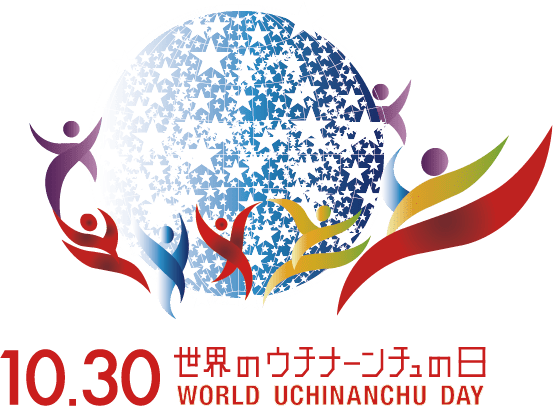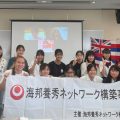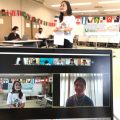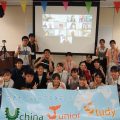[Kaiho Yoshu Program 2022]4th Learning Program~Day1~
2:31 PM
On Sunday, August 14, the first day of the Kaiho Yohshu Program began in Kin Town.
First, a team building session was guided by Mei Nakamura from Kin town Central Community Center. The activity started with self-introduction's game. Then proceeded with a team building session. It consisted of answering Mei's questions. For example, "What is your favorite season? and the participants can choose 4 options: (spring, summer, autumn, and winter) and the students had to move in the favorite season in the indicated place. The participants shared their reason why it is their favorite season. And then continued to other topics with this game.
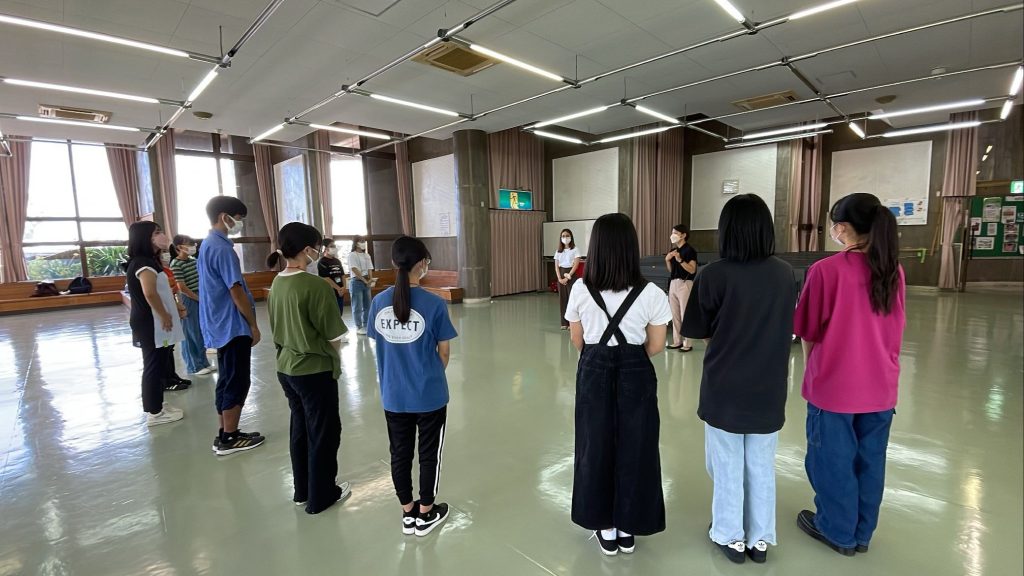
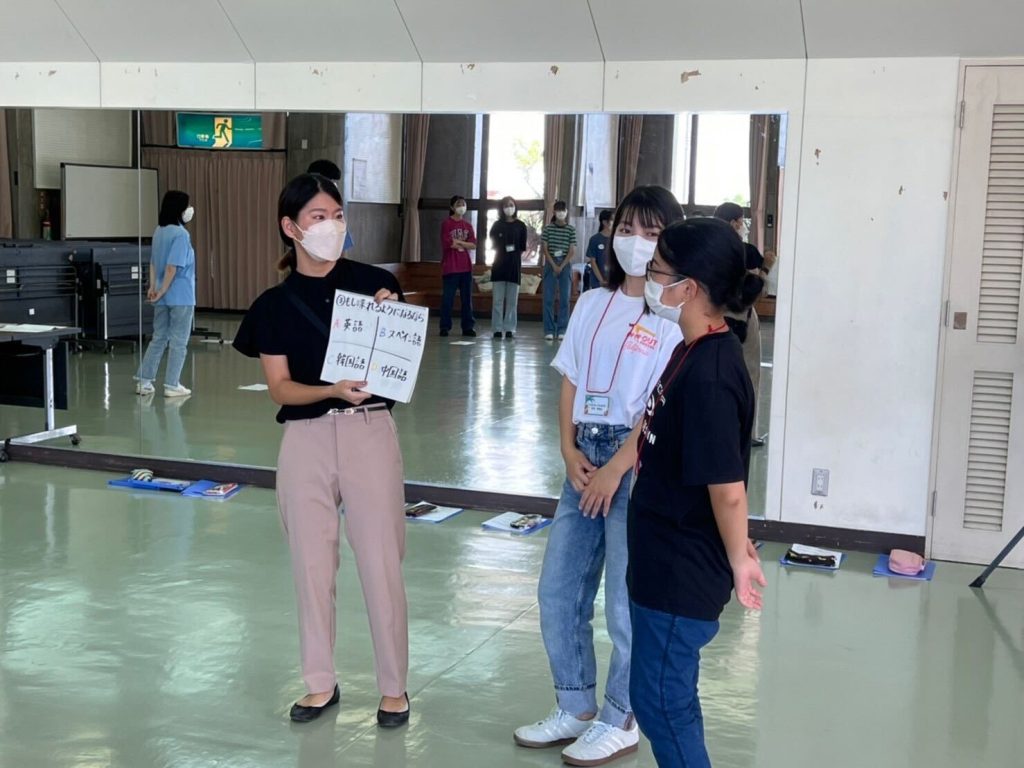
The next part of the program was about the history of Okinawan people who migrated in different countries. They learned the story about Kyuzo Touyama from Okinawa, and the episode of postwar emigrants who sent donations (particularly about pigs' donation) to Okinawa. The students listened to the fact seriously.
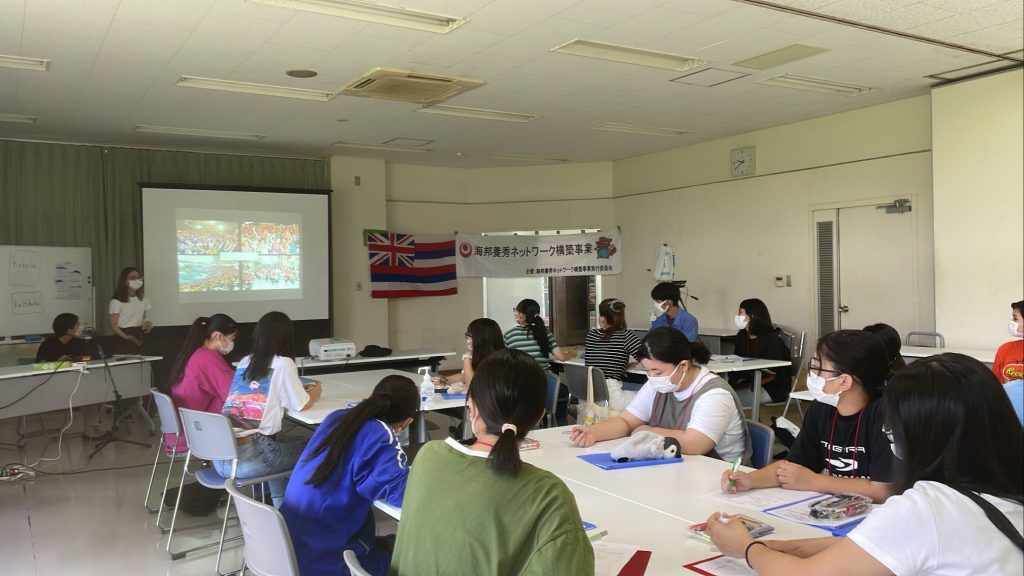
Based on this fact, the students actually visited the Touyama Kyuzo Memorial Museum which is located in Kin Town.
There, along with a statue of Kyuzo Touyama, were displayed not only photos and documents of the countries where they migrated. Also passports of Mr Toyama that were used in those days. After viewing the exhibits, the group was divided into smaller groups to share what they found interesting and what materials were available. Each of us had different ideas and I felt that our learning was further deepened.
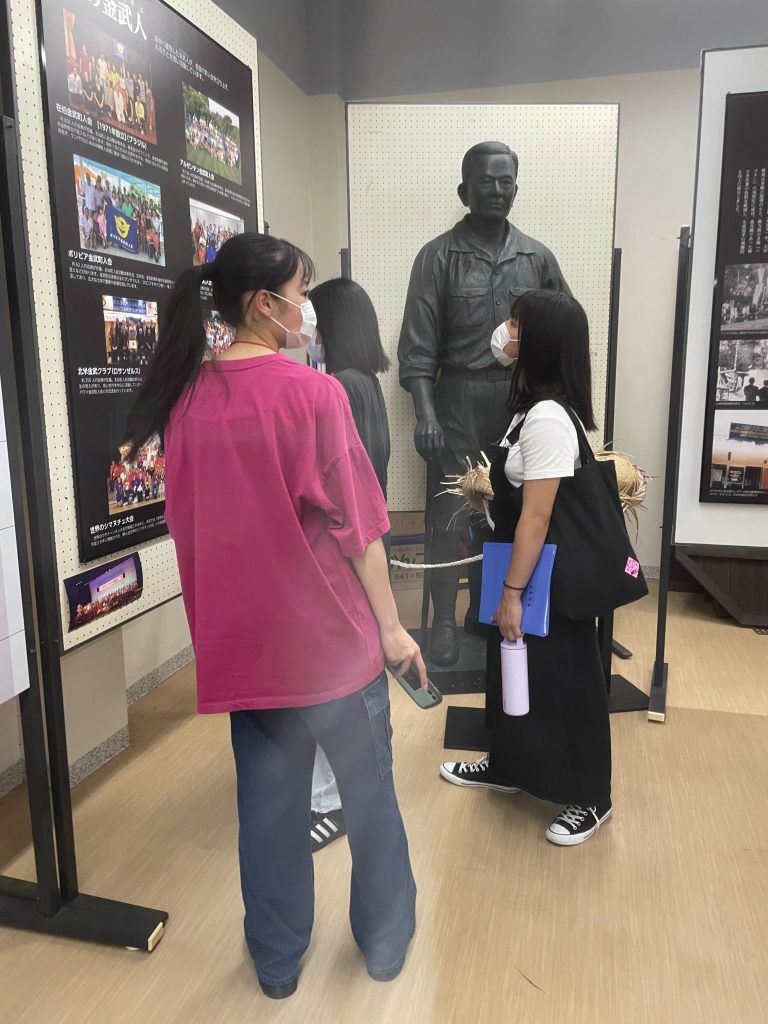
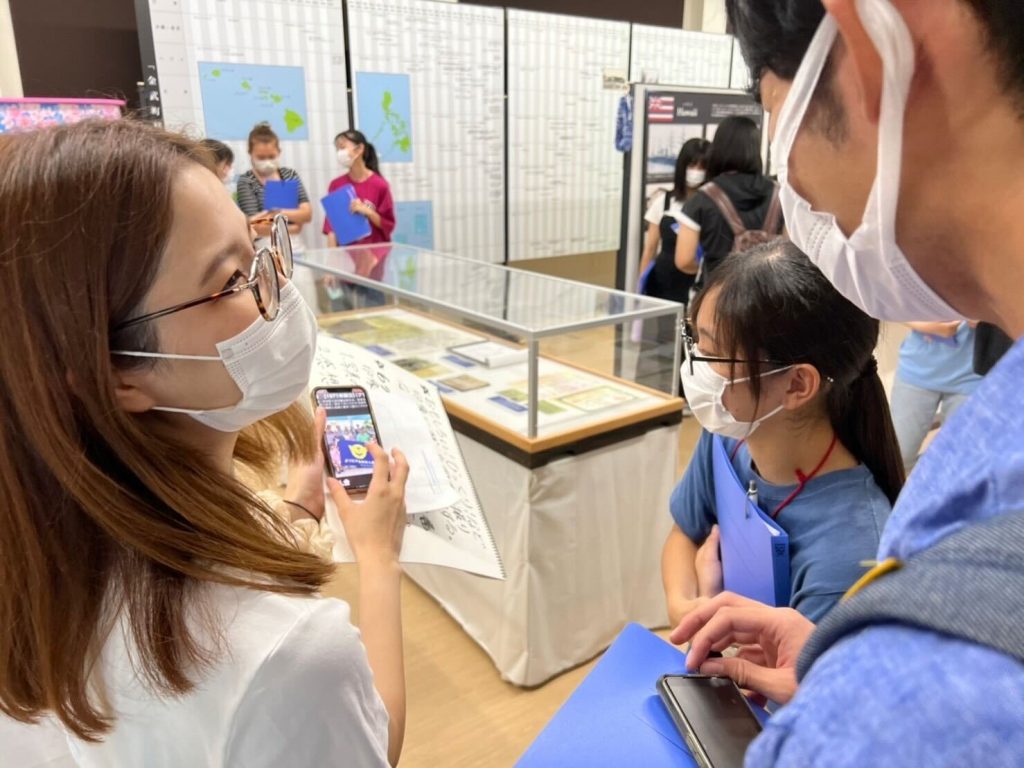
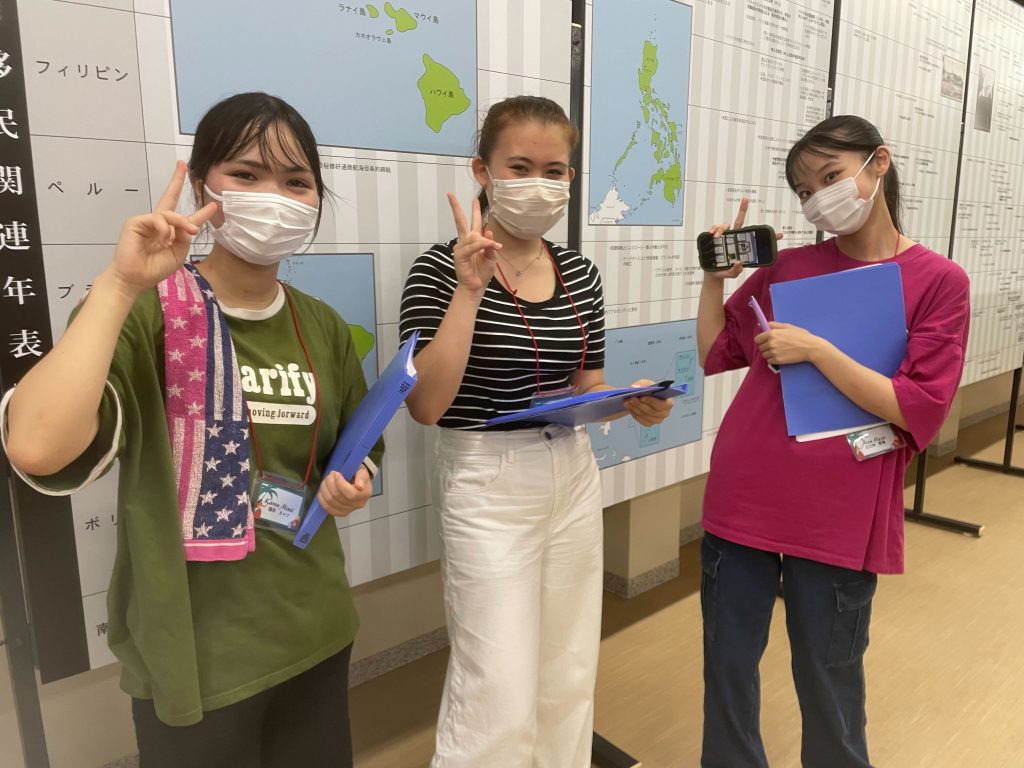
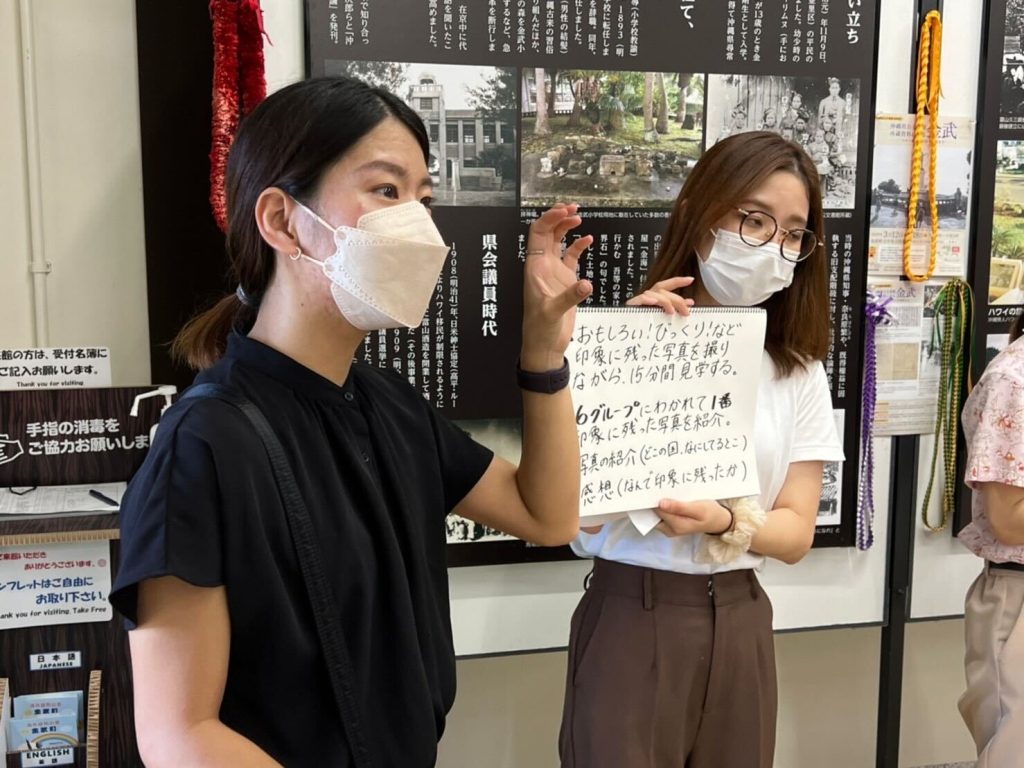
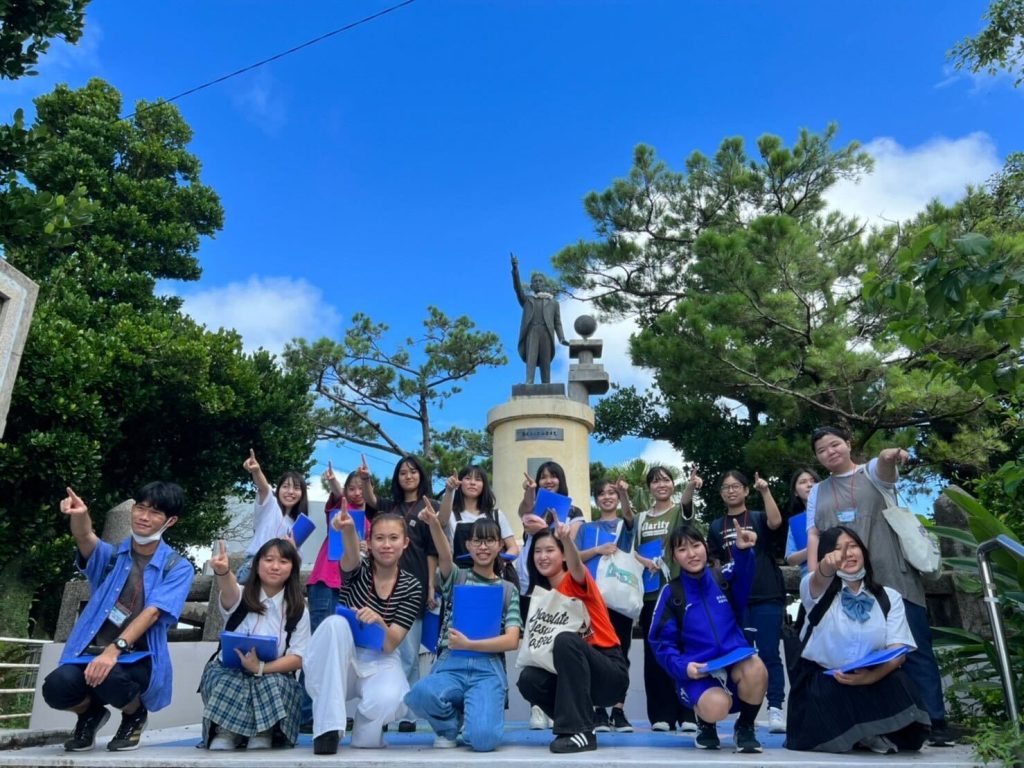
We returned to the Central Community Center to learn about the activities of the Hawaii Union of Okinawa Associations (HUOA) and interact with Hawaiian Uchinanchu who live in Okinawa. We also met Kurt Nagamine in person. In person, Kurt Nagamine told us about Shinka's activities and issues, and we learned about their efforts to conserve Okinawan culture in Hawaii. Afterwards, the students asked him about his vision, "How do you plan to expand your activities?" They seemed to be able to think about it as their own personal matter.
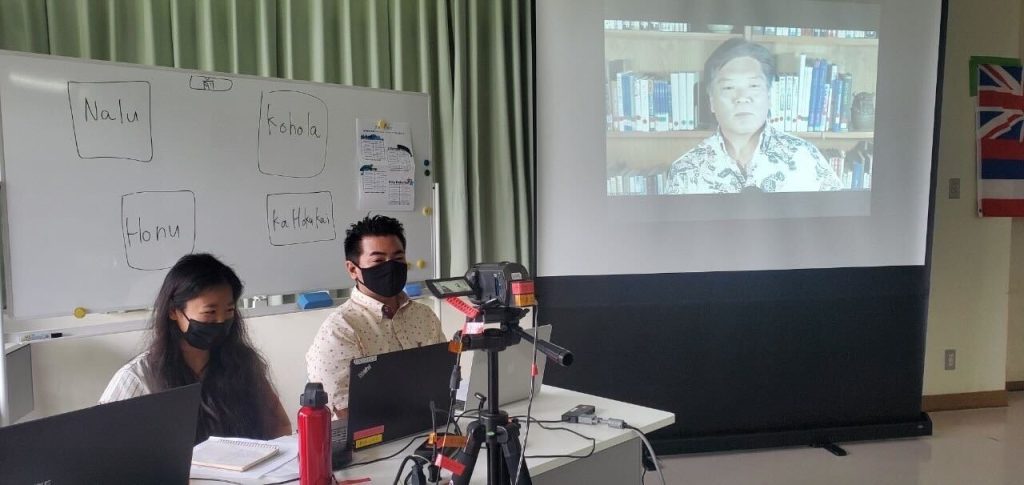
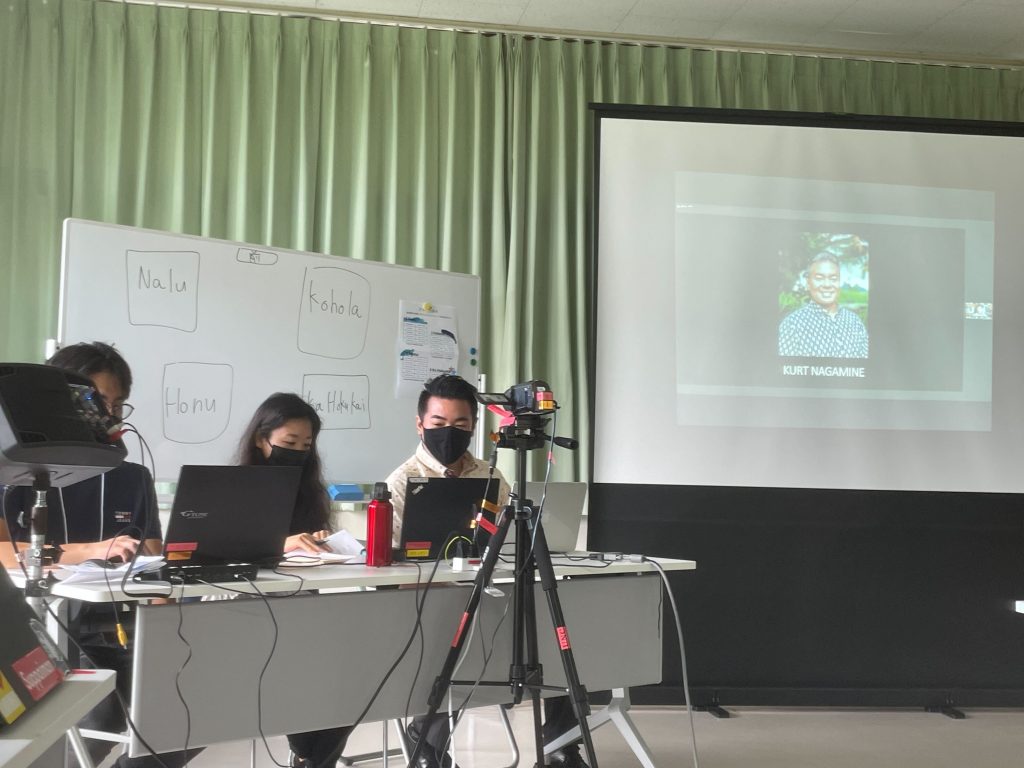
After learning about the activities to preserve Okinawan culture in Hawaii, the participants actually interacted with Uchinanchu from Hawaii who live in Okinawa. The Hawaiian-Okinawan joined a small group of students and showed them pictures and talked about why he came to Okinawa, his life in Hawaii, his hobbies, and what he liked about Okinawa. The students asked, "What is your favorite Okinawan food?" as well as sharing their hobbies and interests, and it seemed like the exchange meeting was full of smiles.
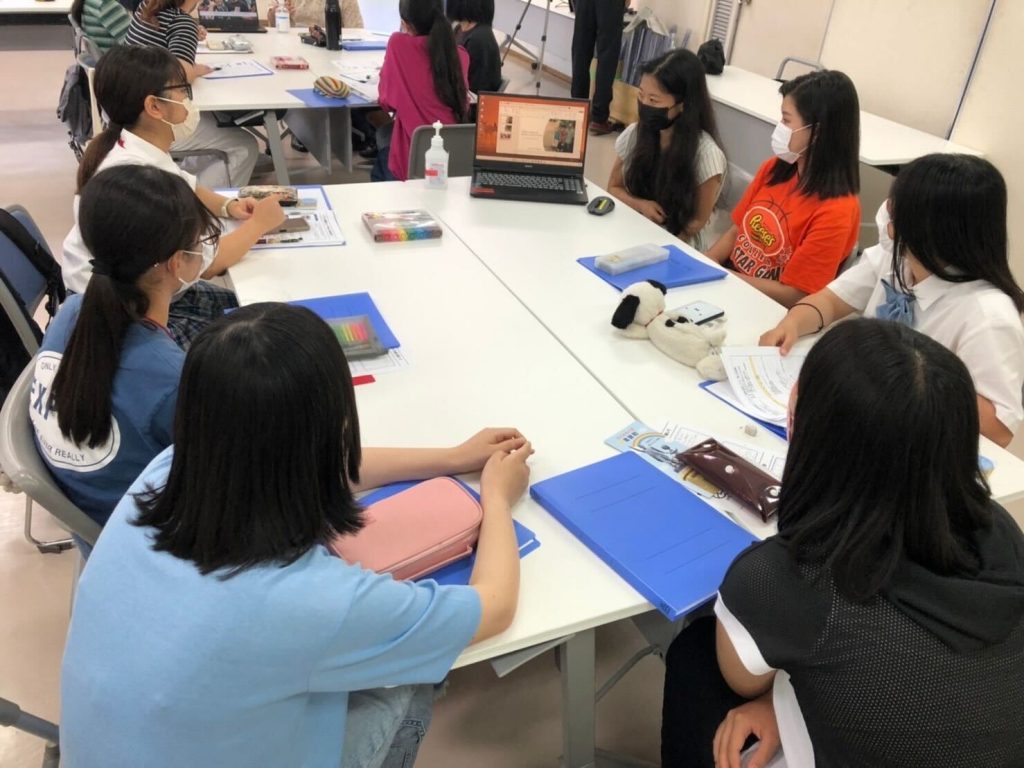
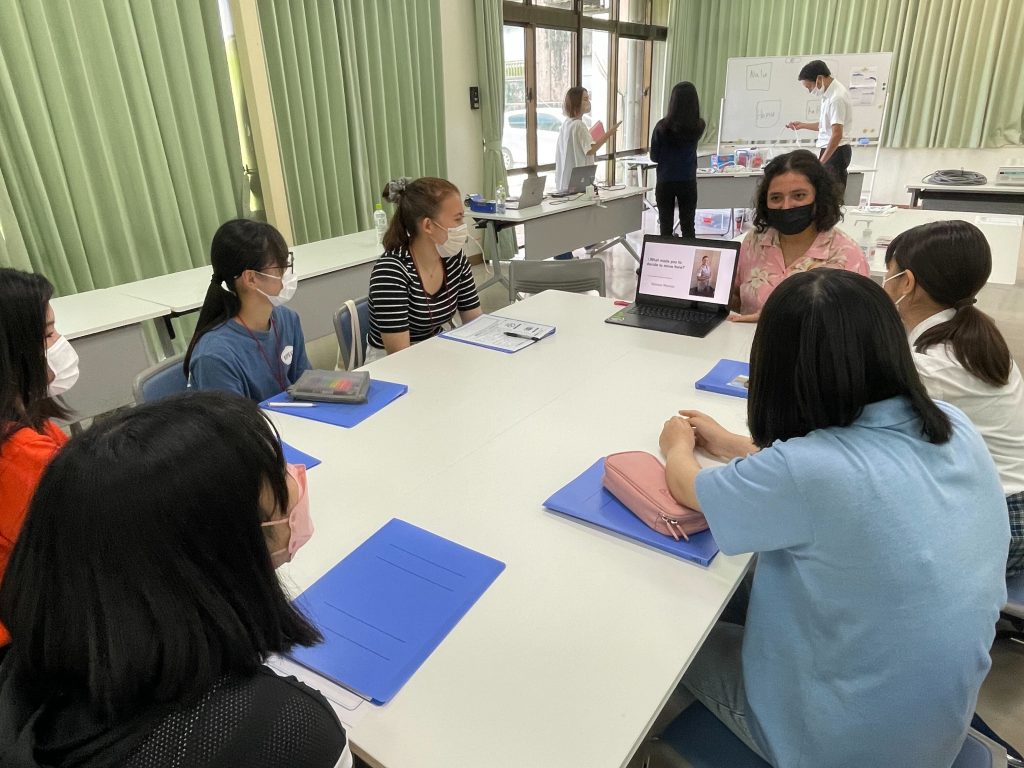
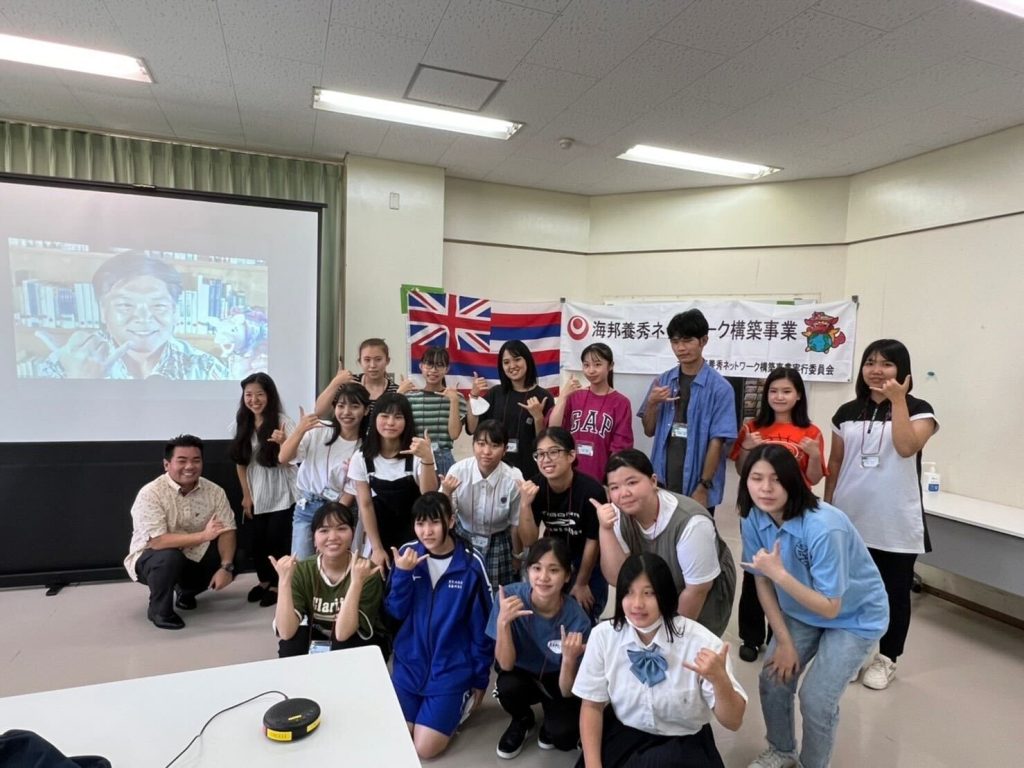
During the workshop of Naha Taiko, we practiced "Shinkanucha". At first, the participants were impressed with the powerful performance of Shinkanucha by Naha Taiko Group. However, as they practiced the shimedaiko, paranku, and odaiko separately, they quickly picked up on the sound of each drum, and at the end of the practice session, the sounds of the different drums overlapped and became a powerful interpretation.
We connected online with Kizuna Eisa in Hawaii and they showed us one part of the shinkanucha. The choreography style was Hawaiian hula dance. After all the practice sessions, the choreography was done, we got a rehearsal and finally danced the shinkanucha online with Kizuna eisa. It was a time of joy and pride to be able to connect through one culture, Okinawan eisa.
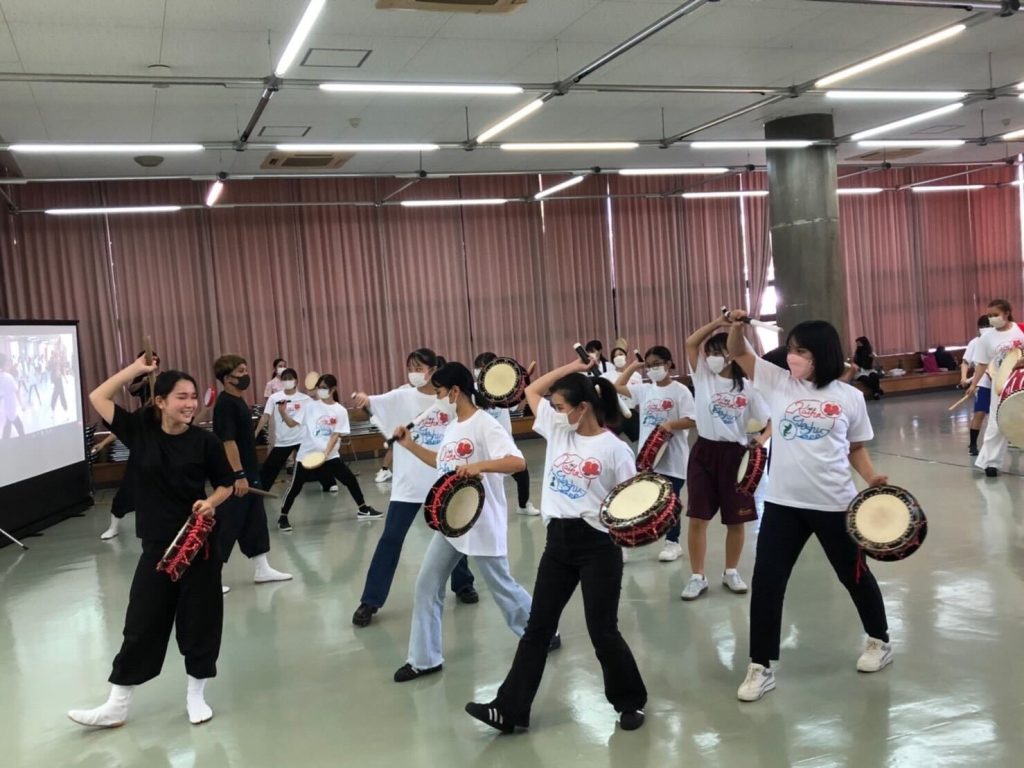
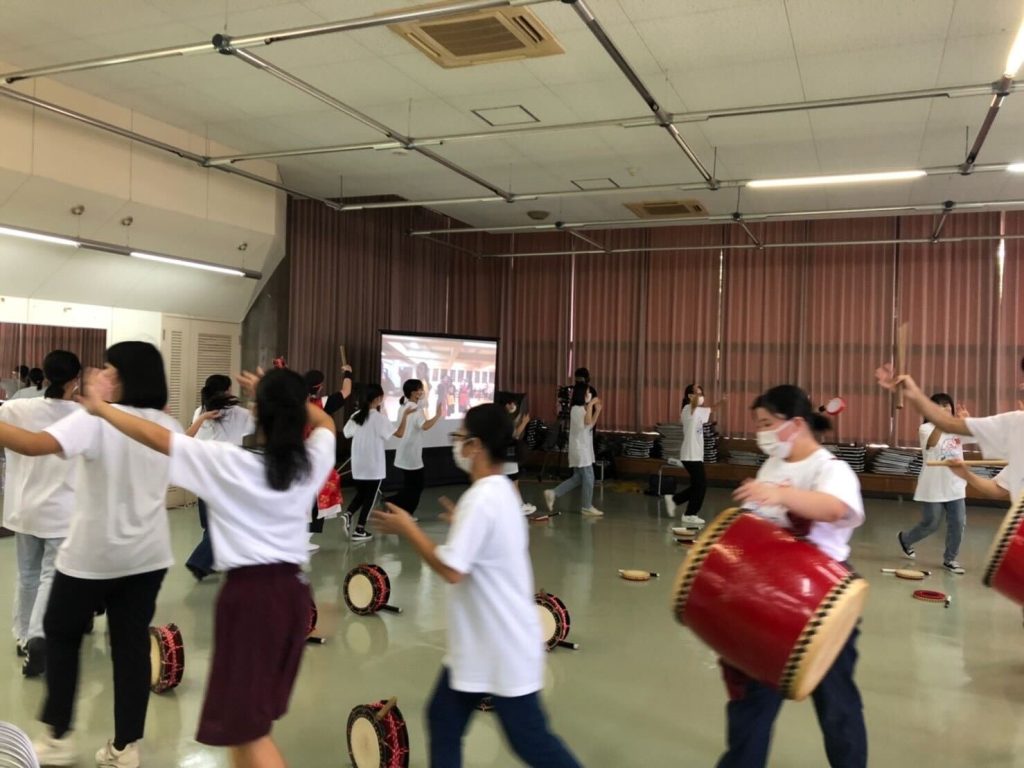
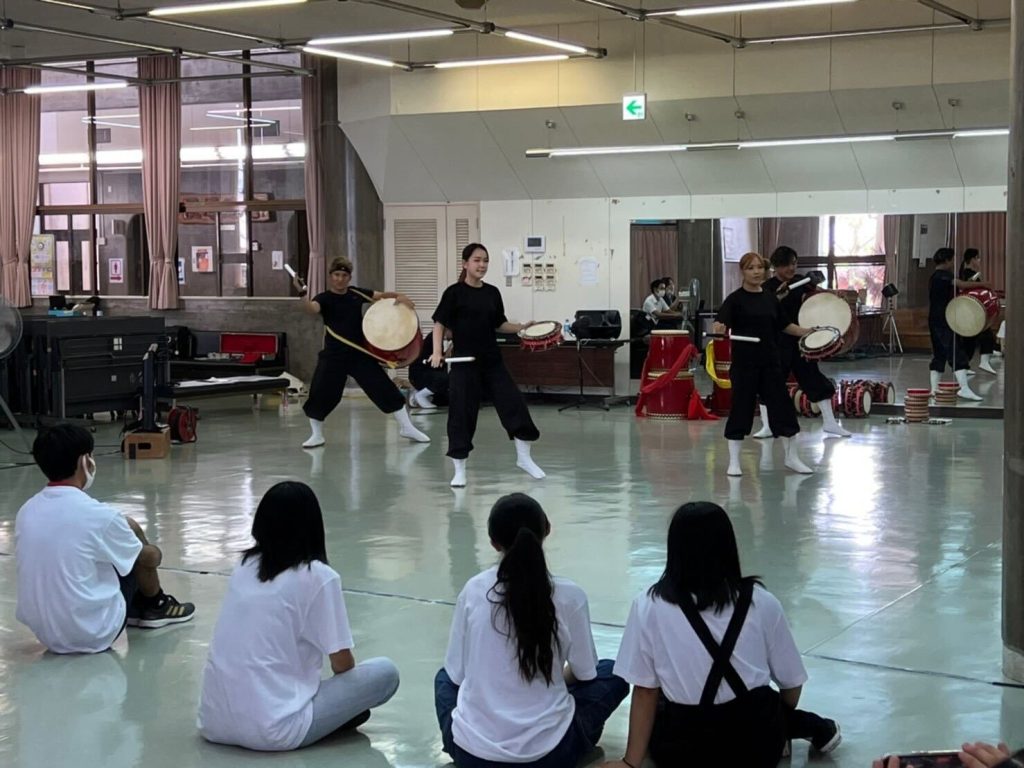
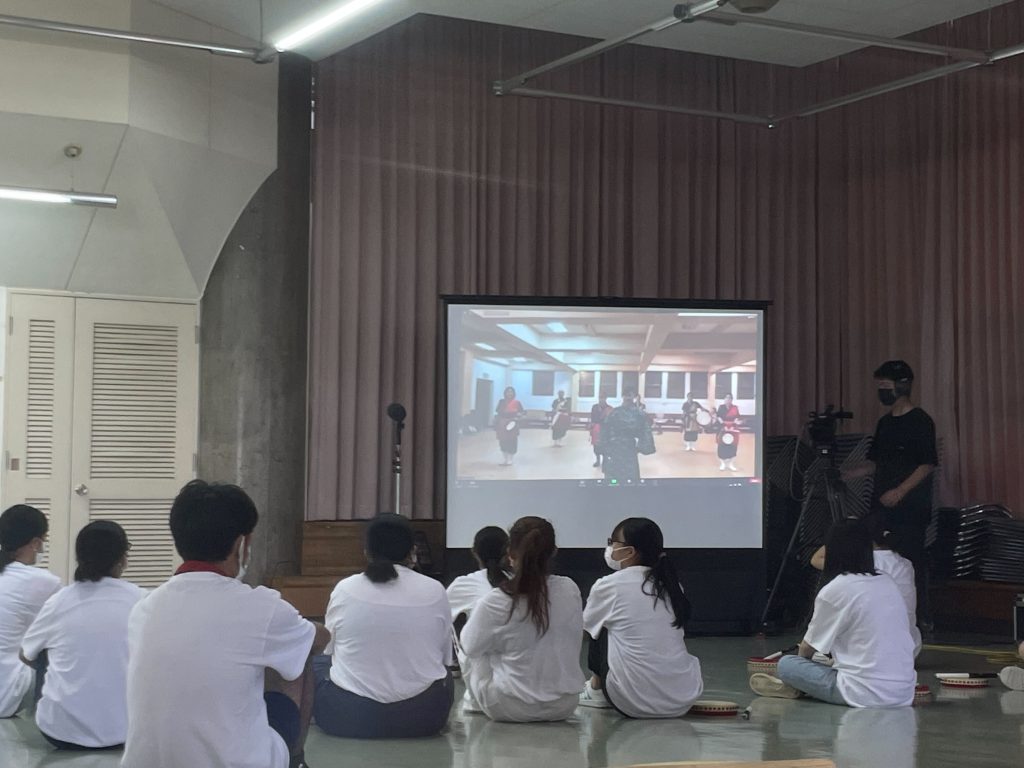
The first day of the training was filled with a lot of activities such as learning immigrants, exchanges, and eisa, and I think the students enjoyed a lot of this session. I saw many smiles.

